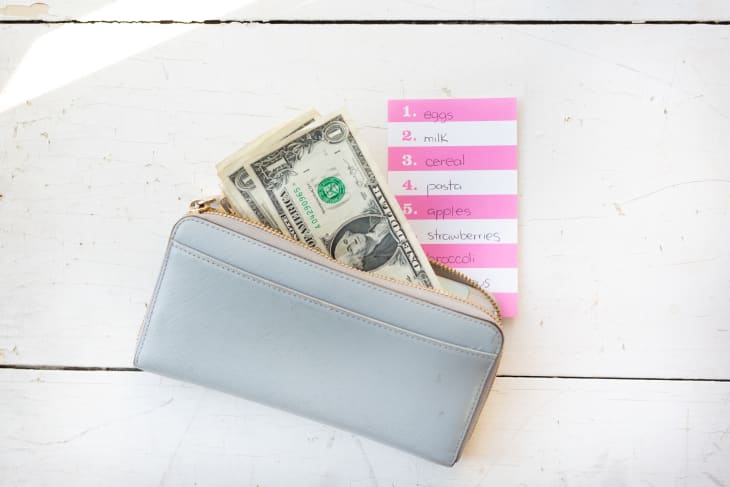5 Smart Tips for Managing Your Grocery Budget
Here at Kitchn we believe that getting in control of your finances starts with food. Do you want to save up for a special trip? Or maybe you’re trying to lower your student debt? Keeping a close watch on your grocery budget can help. Being a smart shopper and planner can save you a whole lot of dough in the long run.
Here are five smart tips and tools for managing your grocery budget.
1. Determine the right budget for you with a grocery budget calculator.
First, you’ll want to assess how much you’re already spending on groceries for your household, and get an idea of what you might like to spend on food. We recommend a grocery budget calculator like this one, which is based on the U.S. Department of Agriculture’s Low-Cost Food Plan. There’s also an easy-reference chart that was modeled after the same report.
2. Use the envelope system (and leave your plastic at home).
If you’re new to budgeting, this is where you should start. This tried-and-true cash-based budgeting method involves separating your monthly expenses into various envelopes. After figuring how much you’d like to spend a month or each week on groceries, store that amount as cash into an envelope that you’ll take with you while out at the store. Once you spend the cash you’ve rationed out, that’s it. Be sure to leave your plastic at home to test how well you do.
For an extra challenge, use the contents of this envelope toward dining out as well. Although you may have to store more cash away in this envelope to cover your dining-out needs, this may help you assess how much you spend on eating out versus how much you spend to stock the fridge at home.
Pro tip: For a mobile way to track your envelope method, give Goodbudget a download.
3. Download a budgeting app.
If you need a budget that’s as on the go as you are, try downloading one of the many budgeting apps available. We like Mint, which syncs to your bank account, helps you create a budget, tracks spending, and even nudges you via email when you’re overspending in a certain category.
Pro tip: Be sure to explore the features on your mobile banking app, too. You may find that your bank’s app includes a section that tracks your spending in various categories and allows you to edit your own budget.
4. Embrace meal planning.
Meal planning and budgeting go hand in hand. There’s no right or wrong way to meal plan and everyone has a different system, but sites like Plan to Eat can help you buy the items you actually need and will use during that week or month for home-cooked meals.
Plan out recipes collected from the web or from home and have your shopping list automatically generated based on the meals you’ve selected. Your shopping list can be organized by the stores you like to browse; some people use this automatically generated list to shop through their favorite store’s online shopping service, such as Kroger’s Clicklist.
(Note: This site is a subscription service, but try it free for 30 days to test how it works for you.)
5. Use a printable grocery list.
Pen and paper are still your friends. Whether you meal plan or not, it’s helpful to make a list. Before your trip to the store, fill out your grocery list (I like using this printable one from Day Designer) and don’t forget to put your pen in your bag. While at the store, jot down the price of each item you’re picking up from your list. This will keep you mindful of your items and their cost.
Take a moment to add up your list before checking out — how does your total compare to how much you’d like to spend?
What are your best budgeting tips and tools? Let us know in the comments!
